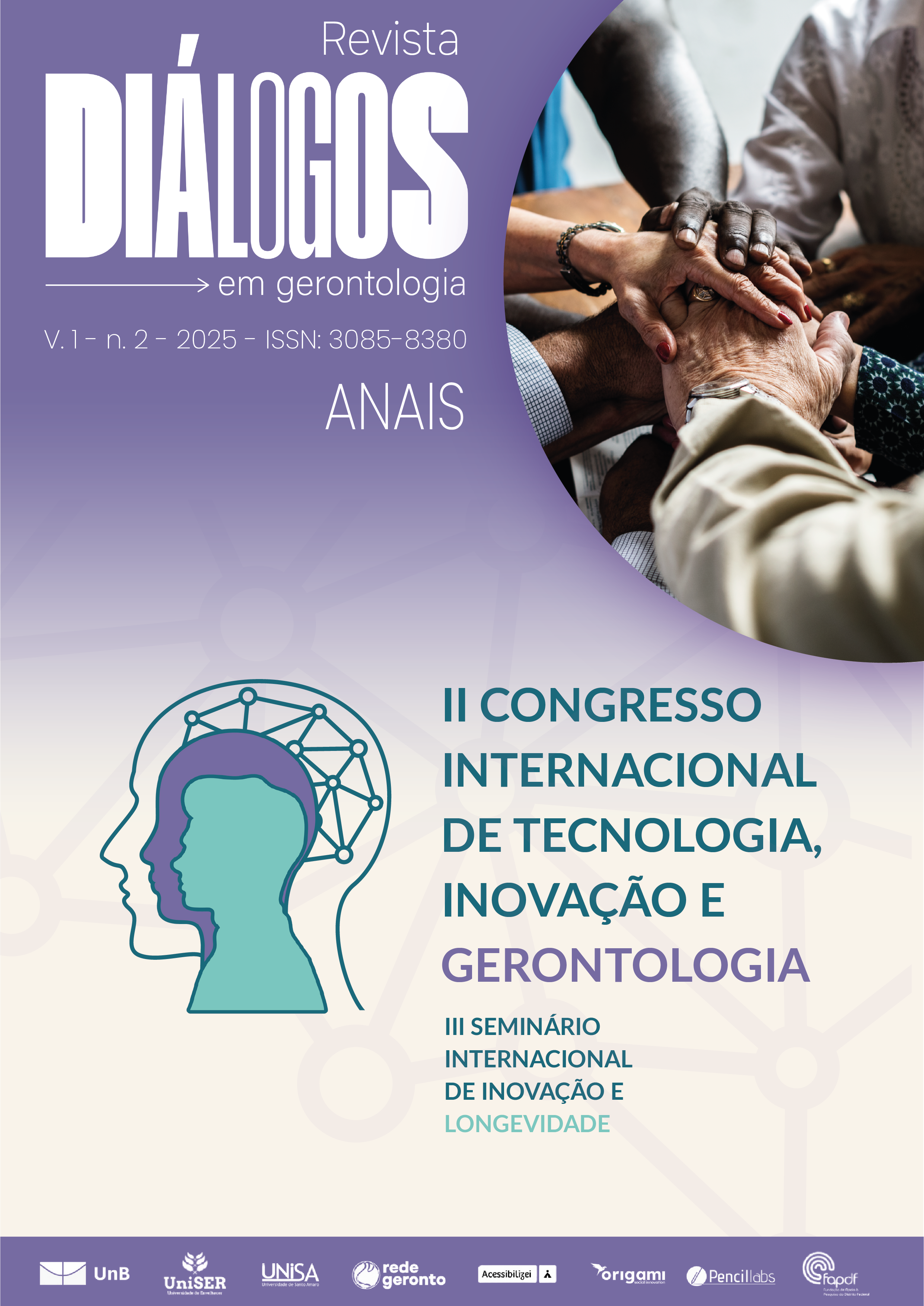GROUPS HIPERDIA AND THE MANAGEMENT OF POLYPHARMACY IN OLDER ADULTS: EXPERIENCE WITH DIGITAL HEALTH TECHNOLOGIES
Abstract
Background: The Hiperdia Groups are a well-established strategy in Primary Health Care (PHC) in Brazil, bringing together users diagnosed with systemic arterial hypertension and/or diabetes mellitus for clinical follow-up and multiprofessional health education (Brasil, 2006; Mendes, 2015). In a context marked by population aging and a rising prevalence of chronic diseases, the proportion of individuals diagnosed with hypertension increased from 21.5% in 2006 to 24.4% in 2009 (Cavagioni & Pierin, 2011). As a result, polypharmacy emerges as a challenge to therapeutic adherence, medication safety, and the autonomy of older adults (Farias et al., 2019; Oliveira et al., 2012). Identifying accessible and effective strategies for managing multiple medication use is therefore an urgent public policy need aimed at quality longevity. Purpose: The primary aim of this study is to present Hiperdia Groups as potential venues for the qualified management of polypharmacy among older adults, supported by digital health technologies. A secondary objective is to report on participants’ acceptance and use of technological tools as aids for medication self-management (Santana et al., 2020; Silva et al., 2022). Methods: This is an experience report based on systematic notes and direct observations made by an extension student during her participation in meetings of a Hiperdia Group at a Basic Health Unit (UBS) in the Federal District. The experience was analyzed from the perspectives of health education and the integration of digital technologies into the pharmacotherapeutic care of older adults. Results: Fifteen participants were followed, with a mean age of 60 years. The main questions raised concerned correct medication administration, dosing schedules, and possible drug interactions. In response, workshops were organized and led by pharmaceutical professionals, focusing on health education, pharmaceutical care, and demonstrations of accessible technologies. Among the tools showcased, the Meu SUS Digital app stood out—especially its feature for adding medications dispensed by Farmácia Popular, complete with detailed descriptions and reminders. Other free apps for identifying drug interactions were also presented. As a result, 12 of the 15 participants installed these applications on their mobile devices, demonstrating interest and engagement in using technology to organize their treatments. Conclusion: The findings indicate that guided use of digital technologies within Hiperdia Groups can contribute to polypharmacy management, promoting greater safety, autonomy, and treatment adherence among older adults. The introduction of simple digital tools, when mediated by health professionals, proved both feasible and well accepted by participants. Implications: This study highlights the potential of Hiperdia Groups as spaces for innovation in social and technological gerontology. The integration of health education, pharmaceutical care, and digital technologies can strengthen public policies aimed at active aging (Silva & Sena, 2008). We recommend that PHC managers and professionals incorporate active methodologies and digital resources into their educational practices, empowering older adults in the self-management of their health. Future research might explore the effectiveness of these interventions on a larger scale and their integration with computerized health systems.
Downloads
Published
Issue
Section
License
Copyright (c) 2025 Revista Diálogos em Gerontologia

This work is licensed under a Creative Commons Attribution-NonCommercial 4.0 International License.
A Revista oferece acesso livre e imediato ao seu conteúdo, em consonância com o princípio de que tornar o conhecimento científico amplamente disponível contribui para a democratização do saber. Os(as) autores(as), ao submeterem seus trabalhos, declaram-se detentores(as) dos direitos autorais e autorizam seu uso livre, desde que sem fins comerciais, com obrigatoriedade de atribuição de crédito apropriado à autoria original. Os conteúdos podem ser lidos, baixados, copiados, distribuídos e impressos, conforme os termos da licença Creative Commons Atribuição-NãoComercial 4.0 Internacional (CC BY-NC 4.0).




